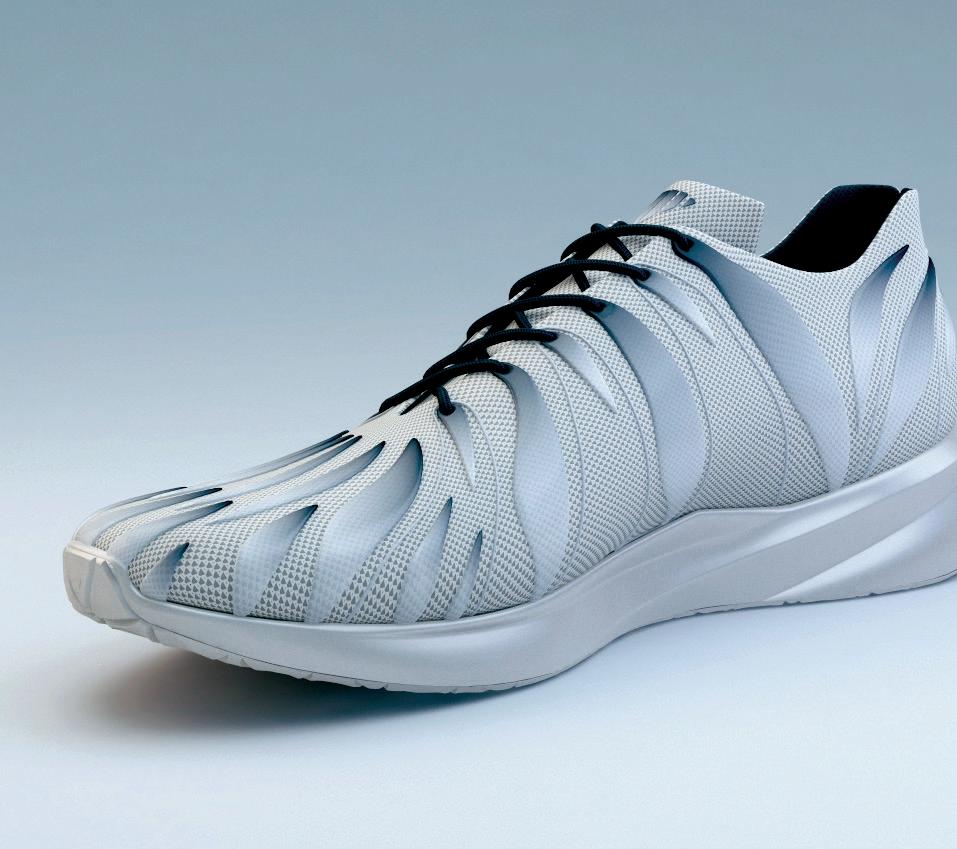sustainability SPONSORED BY
HOW GREEN IS AM? TCT Head of Content Laura Griffiths asks the experts.
I
t was an astute and well-timed comment from Stefanie Brickwede in an interview for our rail feature (page 14) that prompted the question which headlines this very article. Brickwede, Head of Additive Manufacturing at Deutsche Bahn, suggested we need to give AM companies a wakeup call “to focus more on ecological sustainability and not just greenwashing.” Brickwede isn’t the first to use the term “greenwashing”, the idea that a product can be marketed as sustainable without having the credentials to back it up, in reference to the AM sector. The topic has increasingly found its way into conversations amongst those in the industry who want to ensure AM’s green credentials are more than just buzzwords and backed up by real data. ANALYZING THE DATA It’s easy to think of AM as sustainable. You’re adding material where needed, theoretically using less than that of a subtractive method. With the advent of distributed manufacturing, you’re hopefully producing much closer to the point of need, reducing emissions along the way, and through digital warehousing, only producing those parts when you need them. With increased freedom of design, you can reduce weight, potentially saving costs and energy over a part’s lifecycle. But it’s not so clear cut. “It's like a double-edged sword,” Runze Huang, PhD, CEO & Co-founder at ExLattice, Inc. and author of a number of papers focusing on the energy and emissions saving potential of AM, says. “The unique advantages of AM, such as customization, distributed production, flexibility, and multi-material applications, are creating complexity and unique challenges in the end-of-life of
AM products. It needs to be considered more and addressed better now as we still have time before AM entering the mainstream of manufacturing and causing the sustainability issues 20 years later.” Speaking on a recent episode of TCT's Additive Insight podcast, AM consultant Phil Reeves echoed Huang’s thoughts and expressed the need to consider the full lifecycle of an AM part. “You have to look at full lifecycle, endto-end sustainability and I think we do have some issues,” Reeves explains, “certainly on the polymer side, our polymer chemistry which is maybe not as green as they could be; the actual additive manufacturing processes themselves are not as energy efficient as they could be – they haven’t been designed around energy efficiency. If you look at some of them, you pre-heat a significant amount of material to just below its melting temperature, you hit it with a laser – that’s an incredibly inefficient laser – you lose lots of energy in the room, you end up with a cake of material that you then cool down for 24 hours. That’s not an efficient manufacturing process.” Reeves suggests the next industry trend will need to be around “efficiency” of machines, supply chains and materials but also cautions that if we want to encourage the use of AM for production, not just prototyping, then the industry will need to keep up with environmental legislation. Reeves continues: “The worry is that we won’t and at some point, somebody will turn around in the corporate social responsibility group of a large car company and say, ‘that material you’re using in prototyping, we can’t use that anymore, we’re going to be legislated against it,’ so I do think we have to think, as an industry, seriously about sustainability.” Pierre Forêt, Head of AM at industrial gases and engineering company Linde, agrees that we need to be talking more
about efficiency. Linde has developed technologies that retain the quality of metal powder prior to printing and ensure optimum atmospheric conditions within the print chamber. Forêt says the biggest potential drawback to AM is energy usage – both in the type and volume of energy it consumes. “While no one solution can claim to make additive manufacturing more sustainable than traditional production methods, through a combination of technologies – particularly associated to the use of atmospheric gases – the process can be assured to have more reliable, repeatable quality outcomes,” Forêt says. “Once this is achieved, the advantages of additive manufacturing are, at the very least, given the potential to contribute to more sustainable production methods.” MANAGING MATERIALS Materials are just one part of the value chain where the sustainability question lingers. “Material reuse within the process is still problematic,” Alex Kingsbury, AM Industry Fellow & Engagement Lead at RMIT University, offers. “There’s no doubt that the printing process, whether it’s metal or polymer, leads to a degradation of the material and limits its reusability. There are also support structures, a necessary evil in many cases, that are waste products. In this respect, metal is much better than polymer, as the metal recycling supply chain is more flexible than the polymers recycling supply chain. For example, a polymer 3D printed product does not bear the universal recyclability symbol. Even if it does, the polymer recycling supply chain is still highly problematic. Metal at the very least, can be channelled through the scrap metal trade. We are also still yet to really properly reach upstream of 3D printed products and properly assess the raw material sources, for example, the metal powder that you use in your 3D printing process. Where does it come from? What is the carbon footprint of that process? Was it made using a fossil fuel energy source like coal or gas? Or was the electricity source hydropower?”
VOL 7 ISSUE 5 / www.tctmagazine.com / 019











